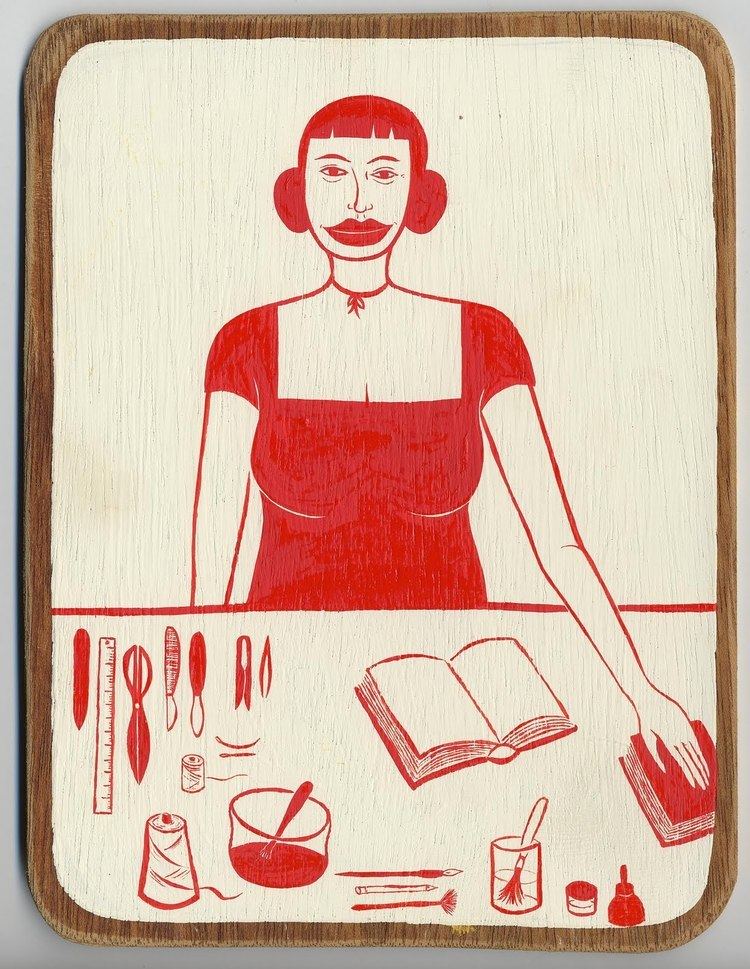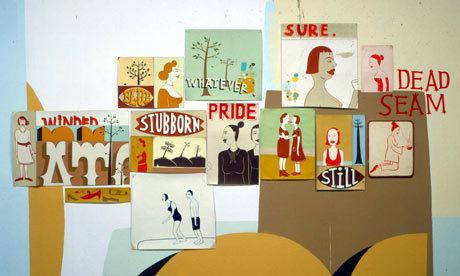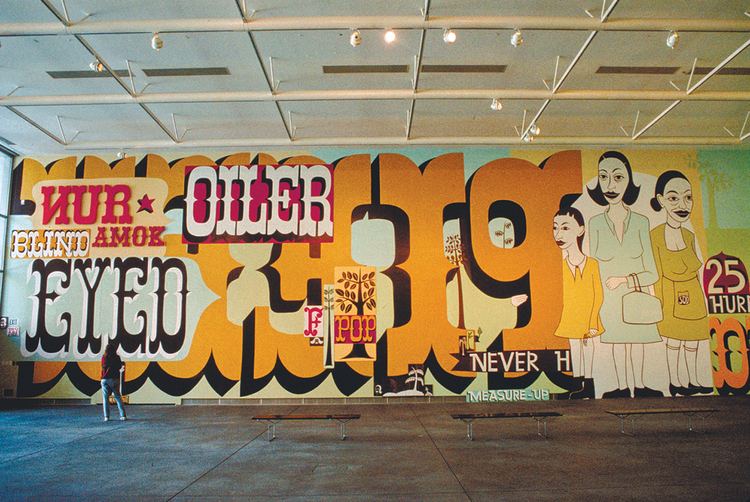Nationality American Movies Beautiful Losers Role Artist | Name Margaret Kilgallen Children Asha McGee | |
 | ||
Full Name Margaret Leisha Kilgallen Born October 28, 1967 ( 1967-10-28 ) Washington, D.C. Awards San Francisco Arts Commission – Individual Grant: Cultural Equity (1997)Fleishhacker Foundation – Eureka Fellowship (1998) Died June 26, 2001, San Francisco, California, United States Similar People Barry McGee, Aaron Rose, Shepard Fairey, Joshua Leonard, Money Mark | ||
Margaret kilgallen heroines art21 exclusive
Margaret Leisha Kilgallen (October 28, 1967 – June 26, 2001) was a San Francisco Bay Area artist. Though a contemporary artist, her work showed a strong influence from folk art. She was considered a central figure in the Bay Area Mission School art movement.
Contents
- Margaret kilgallen heroines art21 exclusive
- Margaret kilgallen art21 preview from season 1 of art in the twenty first century 2001
- Life and career
- Work
- Influences
- Relationship to other artists
- References

Margaret kilgallen art21 preview from season 1 of art in the twenty first century 2001
Life and career

Kilgallen was born in Washington, D.C. and grew up nearby in Kensington, Maryland. She received a BFA in printmaking from Colorado College in 1989 and an MFA from Stanford University in 2001.

Though diagnosed with breast cancer, Kilgallen opted to forgo chemotherapy so that she might carry a pregnancy to term. She died in 2001, at age 33, three weeks after the birth of Asha, her daughter with her husband and collaborator Barry McGee. Kilgallen has since been the subject of several posthumous retrospectives.

Kilgallen's first major group exhibitions appeared in 1997 and included the first Bay Area Now show at Yerba Buena Center for the Arts, soon followed by a solo exhibition at The Drawing Center in New York City. In 2000, she and Barry McGee had a featured exhibition at the UCLA Hammer Museum. A number of major exhibitions took place after her death. In 2002, her work was chosen for that year's Whitney Biennial. In 2005, a survey of her work was shown at the Gallery at REDCAT. Her work was also an important part of the 2004–2006 touring exhibit, Beautiful Losers: Contemporary Art and Street Culture.
Other galleries that have exhibited her work include the Luggage Store in San Francisco; Gallery 16 in San Francisco; Forum for Contemporary Art in St. Louis; the Institute of Contemporary Art in Philadelphia; and The Geffen Contemporary at the Museum of Contemporary Art in Los Angeles.
Work
Kilgallen's paintings and murals reflected a variety of influences, including the dying art of hand-painted signs, elements of American folk art, mural painting, and a variety of formal painting strategies. At an early age, she was impressed by examples of works by Southwest and Mexican artists, and she employed these artists' use of warm colors in her own painting. Her many works in gouache and acrylic on found paper (often discarded book endpapers) reflect an interest in typographic styles and symbology that can be traced to her work as a book conservator with Dan Flanagan at the San Francisco Public Library in the early to mid-1990s.
In addition to her commissioned mural work, Kilgallen was also a graffiti artist under the tag names "Meta" and "Matokie Slaughter." The latter name, a homage to folk musician Matokie Slaughter, was specifically used for freight train graffiti. Kilgallen was an accomplished banjo player and became an avid surfer after moving to California.
Influences
Kilgallen was an avid reader, looking to Appalachian music, signage, letterpress printing, freight train vandal art, and religious and decorative arts to inform her work. Her work demonstrates her respect for and engagement with craftsmanship and the stories of everyday peoples' lives. She was especially interested in "the evidence of the maker's hand." As she explained:
I like things that are handmade and I like to see people's hand in the world, anywhere in the world; it doesn't matter to me where it is. And in my own work, I do everything by hand and feet. I don't project or use anything mechanical most of the time, because even though I do spend a lot of time trying to perfect my line work and my hand, my hand will always be imperfect because I'm human. And I think it's the part that's off that's interesting, that even if I'm doing really big letters and I spend a lot of time going over the line and over the line and trying to make it straight, I'll never be able to make it straight. From a distance it might look straight, but when you get close up, you can always see the line waver. And I think that's where the beauty is.
Relationship to other artists
Kilgallen had close ties with a number of other artists. These artists include, besides her husband and collaborator Barry McGee, Chris Johanson, Josh Lazcano, Alicia McCarthy, Clare Rojas, Amy Franceschini, Thomas Campbell, Dan Flanagan, Symantha Gates, Nell Gould, filmmaker Bill Daniel, and musician Tommy Guerrero, for whom she designed album covers.
